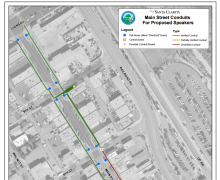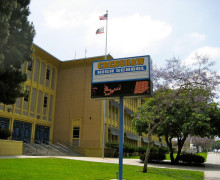Public Announcement (PA) Design
Paging systems are, generally speaking, an easy peripheral sell and yield high profitability.
There are six fundamentals of sound that you must understand to successfully design a paging system, starting with the very definition of sound itself:
Sound: Oscillation in the form of energy transmitted through matter.
Measurement of sound: Recorded in decibels (dB), it expresses relative intensity, from 0 to 130, initial pain level.
Media that carry sound: Broadcast mechanism allowing transference of current into audible sound (e.g., speakers, horns).
Elements of sound: Sound does not "appear" at a medium; it must be "generated" to it via an amplifier.
Wattage: Represents the amount of power brought to the medium from the amplifier.
Sound propagation: Process through which sound disperses at varying distances. The further away the subject, the greater the loss in dB, with an increase in dispersion.
The site survey is a crucial first step in the design phase that lets us see physical obstructions and any other characteristics that might help or hinder sound travel. Also, we need to obtain blueprints of the facility. These will be valuable as you plot the locations for the speakers or horns.
Another step in the design process is to identify the environment and topology.
We are calculating all major parameters of future PA system, for example, Power load and make the decision about equipment and best wiring layout.
TYPICAL SHEET INDEX FOR PA SYSTEM:
-GENERAL NOTES&SYMBOL LIST
-PA SIGNAL BLOCK RISER DIAGRAM
-SITE PLAN
-CONDUIT SCHEDULE
-PA EQUIPMENT LOCATION FLOORPLAN
-PA SYSTEM DETAILS AND ELEVATIONS
CODES AND STANDARDS TO FOLLOW
1. EIA/TIA-568: Commercial building telecommunications wiring
standard and current addenda.TIA-EIA-568-B.2
2. EIA/TIA-569: Commercial building standard for telecommunications pathways and spaces.
3. EIA/TIA-606: Administration standard for telecommunications infrastructure of commercial buildings.
4. EIA/TIA-607: Commercial building grounding and bonding requirements for telecommunications.
5. CCR Part 2 - California Building Code (CBC).
6. CCR Part 3 - California Electrical Code (CEC).
7. ANSI, ASTM, UL, NEMA, IEEE and FCC standards as applicable.
8. BICSI Telecommunications Distribution Methods Manual, current edition.
9. FCC Part 68.





